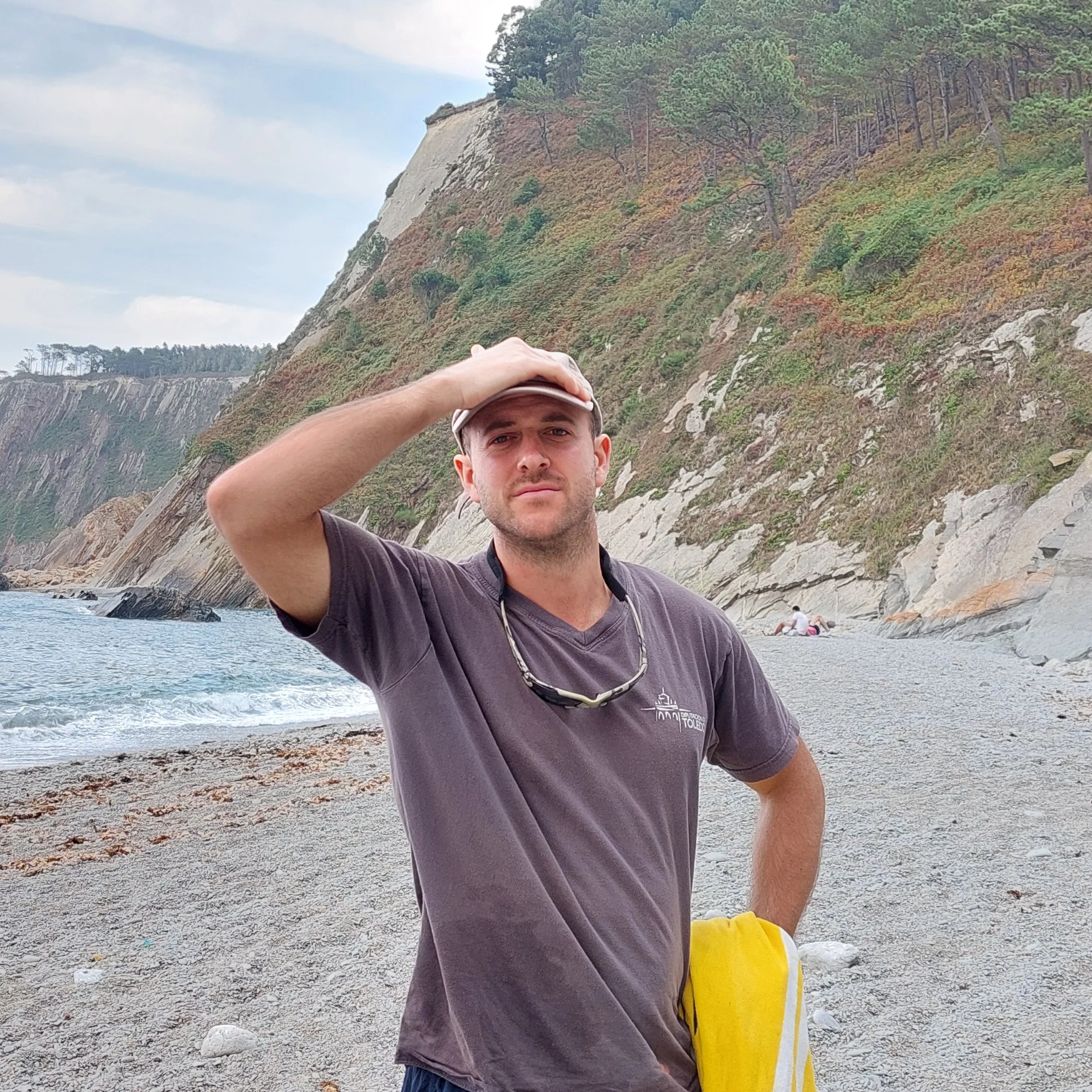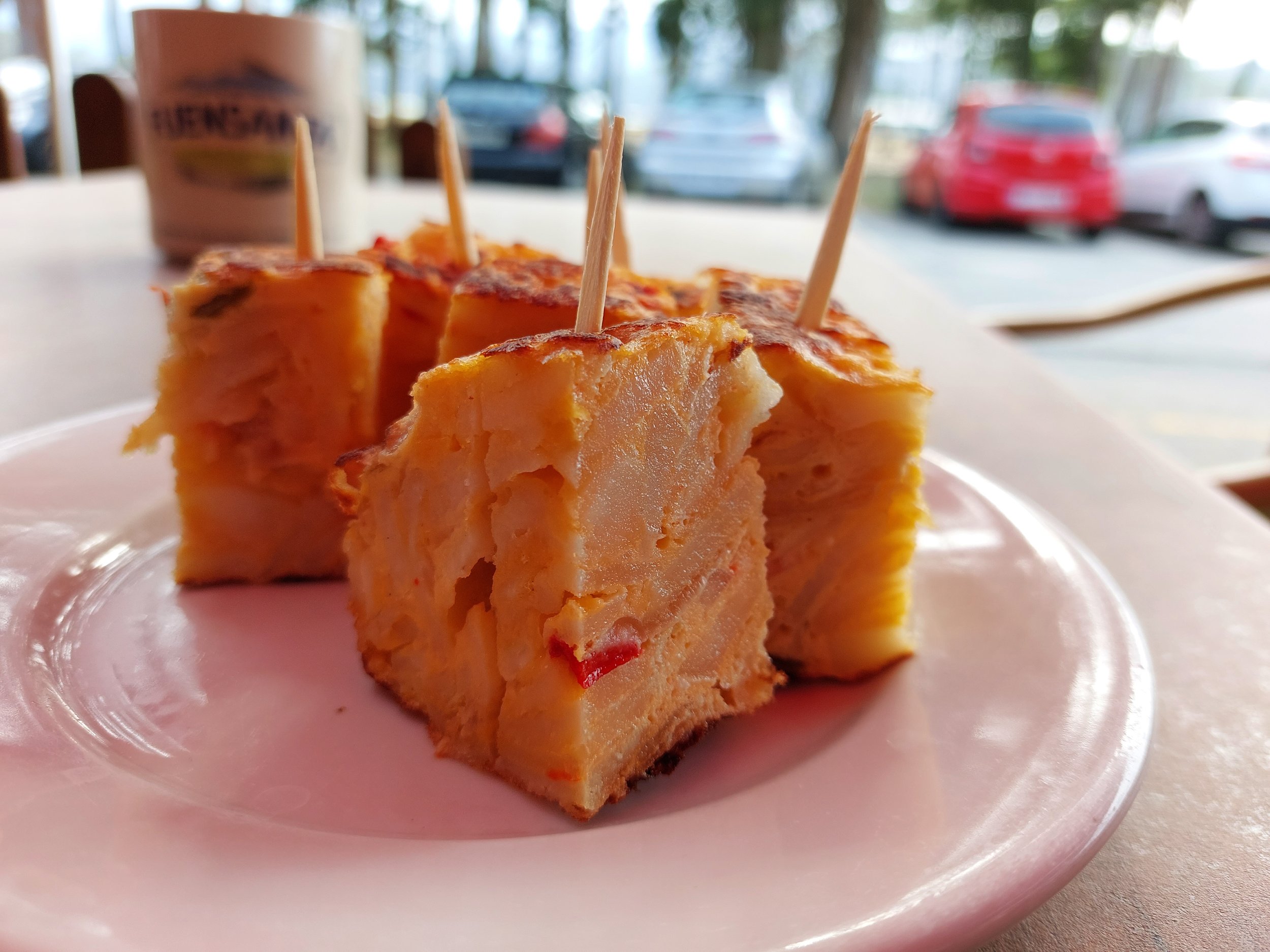From Lost to the Lighthouse
5 lighthouses. 6 protagonists. 7 days of walking. 1 accompanying essay.
A multi-day hike along the Asturian coastline. This new camino draws together many existing walkways, creating a coherent and engaging cultural voyage without having any environmental impact. The project was funded by the EU iPortunas mobility fund for culture and sustainability.






















































As well as taking photos and tracking the route, rating the food, and finding decent places to sleep, I collected the love stories of the locals along the way. Love stories not of people, but of place, of belonging, of the sea. Because that kind of love is what endures a lifetime, and outlives multiple generations and crumbling communities. That’s the love that gets passed along in recipes, rituals, and tales of local legends. I wrote an essay that tries to encapsulate that feeling, reflects on cultural heritage and maps a hike as a kind of walking story.
Essay extract
The sea – giver and taker of life. The escape route for commies in the civil war, and the drugs route from South America to Spain. Job provider, drowner. Catch fish. Sink bodies. Swim. Face the expanse, fight the waves, flee the fascists, feel the calm. Breath in sync with the in-out of the tides. Go under. Get lonely out there. A dot on the horizon hoping for a catch, admiring the stars, begrudging your wife all warm at home. She who’s packing your catch in tins 12 hours a day, inside, stinking of sardines. Wishing she had the luxury of hating fish, and the time to dream of another life, where she would eat cherry jam and smell sickly sweet. Instead, she’s elbow-deep in guts, gnawing on bones. She runs the home, runs the town, and thinks of you out there under the stars, floating in the darkness.
Small communities cling to cliffs. No one moved there by a decisive current, but rather, was washed up by chance at birth. The villages on the Asturian coastline, swallowed by the passing of time, quietly tell the story of rural Spain.
Benching – the local’s favourite sport. Benches staggered along the village's main road, on cliff edges, in places that make no sense. Unless you are part of the ageing population of the village. Mooching through the day, leaning on a cane, perching, chatting with your mates. Or just sitting and staring at the sea, into the epic expanse of nothing but blue and a horizontal line. To be very still, the only energy you feel is the wind in your thinning hair, to be that dot on the horizon, to sit and embrace the inevitability of your unmomentous end.
The buildings in these villages have the same destiny as all of us. Windows smashed by the wind, trees bursting through the roof. The bricks and mortar broken up into rocks then stones then disintegrated into dirt. It looks like a tragedy because for many of them, you can still see the beauty of their prime – ornate columns framing grand double wooden doors – half open, half there, like the shining eyes popping out of a face crumpled by life’s closing grip. It looks like a tragedy, but it's just our last line, written in front of our eyes. And no one wants to know the end of a story before they have reached it themselves.
So, what about the spirit? How does the soul continue to float from one day to the next, how does the past still ensure a place at the table of tomorrow? We taste it. In culture, in cuisine, in the words that sound so strange and so specific to the settlement we are staying, even just for the night. It reveals itself to the outsider more easily than the one to whom it belongs, until they leave.
I came to Asturias to discover the cultural heritage of the coastline. I hiked from settlement to settlement, seeking out the locals that had a love story to tell about the place they felt inextricably tied to. I interviewed a local historian, a fisherman, a sea museum assistant, a pub owner, beekeeper, and a few more hard-core believers who remain attached to the place like a stubborn barnacle, even once the fish have gone, jobs have gone, and the youth have fled.
This is a beautiful hike, designed to inspire you to do your own thing. Most people come to this area to follow the Camino de Santiago – the classic pilgrim route – which cuts inland, through the dullest part of the landscape, the most direct route to God. The path I am suggesting is an alternative that winds along the coastline, leading you from lighthouse to lighthouse. Handily you will meet the pilgrims at the end of each day, in the villages where there are hikers' guesthouses all set up for them, and now you…
